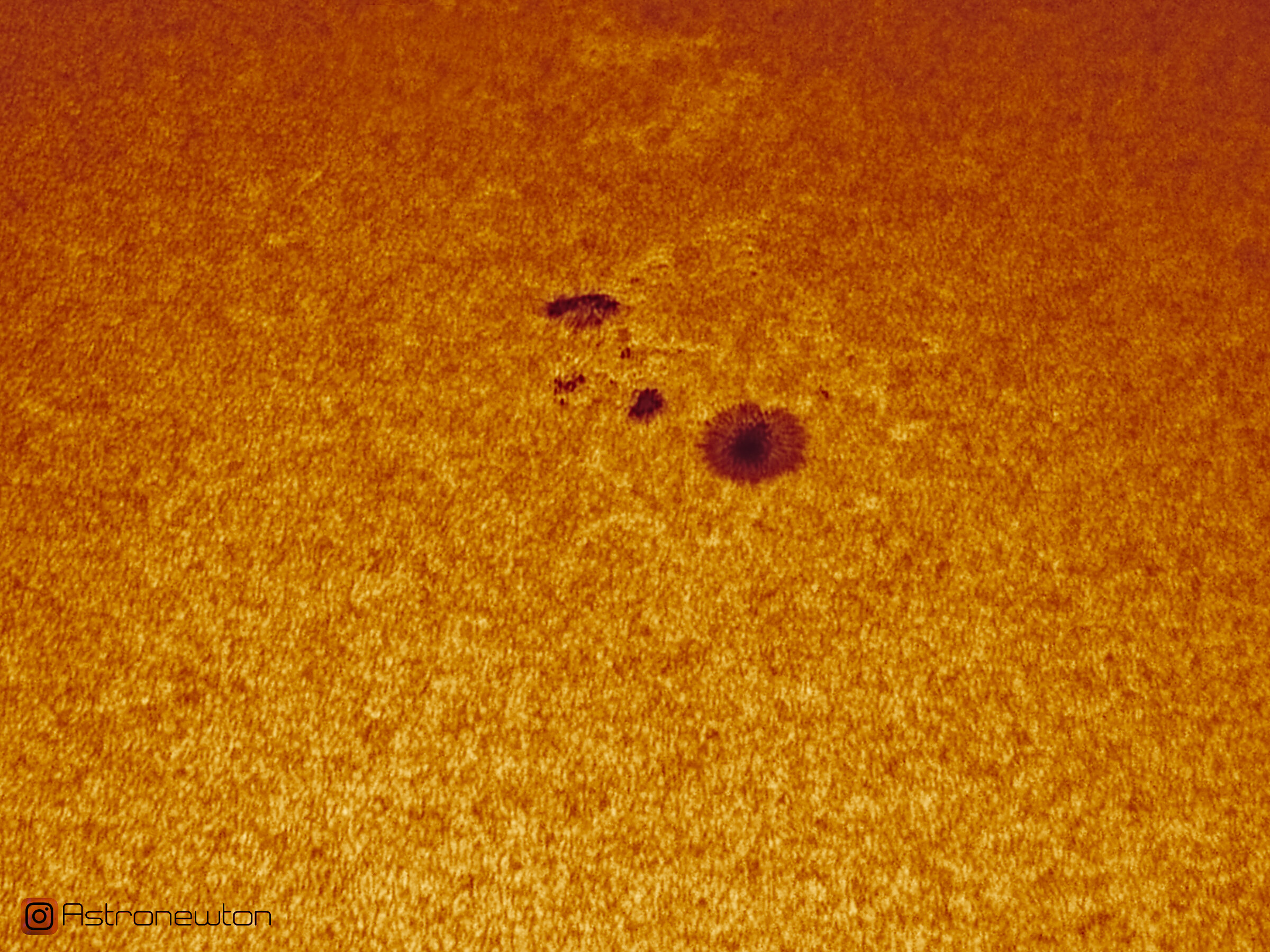Imagery of the Sun in both White Light and Hydrogen-Alpha. Do not point your telescope at the sun without proper filtering!
White Light: the full visible light spectrum reduced to safe levels. This shows the Sun’s Photosphere, or the lowest visible altitude of the star
Hydrogen-Alpha: a deep red 656.28nm wavelength which is emitted by energized Hydrogen atoms. On the Sun this reveals the Chromosphere, or the Sun’s lower atmosphere
AR3576 captured in White Light on February 9, 2024
Solar ISS Transit from the morning of October 31st, 2023 in 0.7A
Capture of AA2593 transiting the Sun (0.7A) on the morning of October 17th
Full Disk capture of AR 3448-3459 in 0.7Å from October 7, 2023
Full Disk capture of AR 3440-3451 in 0.7Å from October 1, 2023
AR3571-3584 in in 0.7A Hα captured on February 12, 2024
AR3256, 3257 in Hydrogen Light from March 19, 2023
AR3256, 3257 in White Light from March 19, 2023
AR3190-3192 in 0.5Å Hα from January 16, 2023
Active Regions 3182, 3184, 3193 in 0.5Å Hα from January 16, 2023
Solar Disc and several Active Regions (3181 through 3192) captured January 13, 2023 in White Light using a Canon RP and 8” SCT
Solar activity in Hydrogen-Alpha, captured July 24, 2021 using a Coronado 60mm and an ASI178MM camera
Sunspot Group AR2765 from June 2020 in White Light, 2000mm Focal Length
Sunspot Group AR2765 from June 2020 in White Light, 4000mm Focal Length
The Full Disk of the Sun in 0.5Å Hα taken on 26 January, 2020, shown in double exposure / false color. AR 2757 can be seen near the meridian with the Sun’s North Pole oriented up
Coronado SolarMax III 70 Double Stack, ZWO ASI1600MM-P
A Solar ISS Transit captured on 11 October 2020 in White Light. Sunspot group AR2775 can be seen near one of the transit captures
Sunspots AR2673 & AR2674 from September 2017, taken with a Canon T3i and a C8 with a White Light solar filter
A pair of Prominences on the edge of the Sun from May 2019, shown in false color with double exposure. AR2714 is the cause of the Prominence seen in the upper-left as it nears the edge of the Sun. North is to the left
Coronado SolarMax II 90 Double Stack, ZWO ASI290MC





















